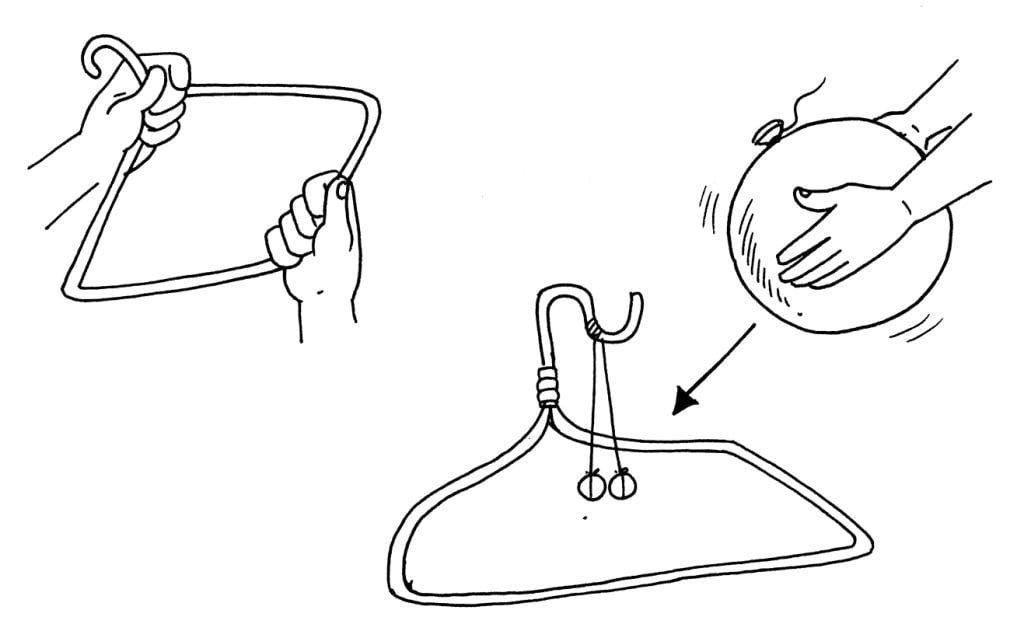
As you’ve learnt, like charges repel while unlike charges attract. You’ve also observed how charges can be transferred from one object to another. The following experiment uses both of these concepts. After building it, figure out how this tool might be used to measure charges.
Things Required:
Metal clothes hanger
12-inch-long thread
Two plastic foam “peanuts”
Balloon
Directions:
Hold the hook of the hanger with one hand. Firmly grasp the long side of the hanger with the other. Slowly and steadily, stretch out the shape of the hanger until it looks like a stretched-out diamond.
Bend up one half of the diamond. The fold you produce will form a stand. Give the hook a quarter turn so that it may fall back towards the centre of the stand.
Tie a foam peanut to both ends of a 12-inch thread. Drape the thread across the upturned hook of the hanger. Position the thread so that the peanut may hang at the same level. Inflate a balloon. Charge the balloon by rubbingit with a piece of wool or fur. Bring the balloon to the peanuts. How do the peanuts react? Touch the charged balloon to the peanuts. What happens now?
This Is What Happens:
The lightweight peanuts were easily influenced by electric charges. When the balloon was brought near by, it caused the charges within the peanuts to separate. The region of the peanuts nearest the balloon became positive and was attracted to the negative balloon.
When the peanuts were touched by the charged balloons, electrons flowed. These electrons caused both peanuts to become negatively charged. Since they had the same charges, the peanuts repelled each other. The repulsion produced enough force for the peanuts to separate and rise. The distance that they separated depended on how much charge they acquired. This distance can be used as a method for measuring charges.

